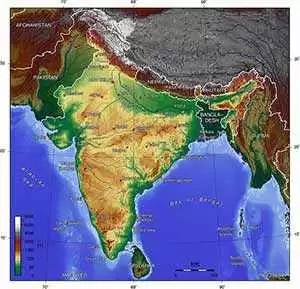Celiac.com 05/01/2014 - While estimates indicate that about 1% of the world's population is affected by celiac disease, it is thought to be uncommon in both India and Asia. However, very little study has been done on celiac disease in Asian nations.
 A team of researchers recently set out to estimate rates of celiac disease in the Indian population. The research team included G.K. Makharia, A.K. Verma, R. Amarchand, S. Bhatnagar, P. Das, A. Goswami, V. Bhatia, V. Ahuja, S. Datta Gupta, and K. Anand. They are affiliated with the Department of Gastroenterology and Human Nutrition at the All India Institute of Medical Sciences in New Delhi, India.
A team of researchers recently set out to estimate rates of celiac disease in the Indian population. The research team included G.K. Makharia, A.K. Verma, R. Amarchand, S. Bhatnagar, P. Das, A. Goswami, V. Bhatia, V. Ahuja, S. Datta Gupta, and K. Anand. They are affiliated with the Department of Gastroenterology and Human Nutrition at the All India Institute of Medical Sciences in New Delhi, India.
Celiac.com Sponsor (A12):
For their cross sectional study, the team estimated rates of celiac disease in urban and rural populations in the National Capital Region in Delhi, India.
For their estimate, they made door-to-door visits with a structured questionnaire, collecting socio-demographic data, and screening for features of celiac disease, namely chronic or recurrent diarrhea and, anemia. In children, they included short stature, and failure to thrive/gain weight.
All respondents who screened positive for any of the above factors, and 10% of screen negative individuals received blood tests for the anti-tissue transglutaminase antibody.
Those with positive blood tests were invited to undergo further evaluation including endoscopic biopsy. Diagnosis for celiac disease was made on the basis of a positive blood test, the presence of villous atrophy and/or response to gluten free diet.
Overall, the team had 10,488 participants, just over 50% of which were male. A total of 5622 participants (53.6%) showed positive first screens. Of those, 2167 (38.5%) received blood test. The team also blood tested an additional 712 (14%) negative first screens.
The team found a total celiac disease blood screen rate of 1.44%, with 95% confidence interval [CI] 1.22 1.69, and a total celiac disease rate of 1.04%, with 95% CI 0.85 1.25.
The prevalence of celiac disease in this north Indian community is slightly over one percent, which is about the same as many western nations, and higher than generally recognized in India.
Source:
- Open Original Shared Link







Recommended Comments